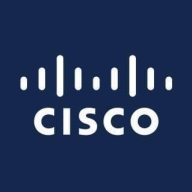

Nagios Core and Meraki Dashboard are well-known competitors in the network monitoring category. Meraki Dashboard has an upper hand due to its ease of use and cloud-based management solutions, despite Nagios Core's extensive customization and open-source cost-effectiveness.
Features: Nagios Core offers great extensibility with support for various plugins, allowing integration with almost any system. Its open-source nature provides unmatched flexibility and customization. Meraki Dashboard simplifies network management with a centralized, cloud-based interface. It offers presence analytics, integrated firewall capabilities, and Layer 7 filtering, making management straightforward and efficient.
Room for Improvement: Nagios Core could benefit from a more modern graphical interface and improved scalability, requiring less technical expertise for setup and maintenance. Meraki Dashboard's pricing may deter some users who do not require heavy Cisco integration. Enhancements in user-friendliness and more granular configuration control are desired.
Ease of Deployment and Customer Service: Nagios Core's deployment is challenging, requiring in-depth technical knowledge and relying on community support. In contrast, Meraki Dashboard offers a smoother deployment process, being cloud-based, with structured support services, allowing for easier remote management.
Pricing and ROI: Nagios Core is a cost-effective option with minimal upfront costs beyond initial setup and configuration. It is appreciated for lowering server monitoring expenses. Meraki Dashboard, although requiring a licensing fee, provides a comprehensive suite of features and superior support, offering returns in reduced administrative costs and enhanced management efficiency.
When our site went down, Cisco's technical support was very responsive and effective, so I would rate them nine out of ten for their support.
The support response time can be slow, sometimes taking up to fifteen hours.
For technical support, I would give it a ten.
The solution is scalable.
We have not encountered any downtime related to the Meraki cloud feature in the last five years.
I tried many other solutions at work, however, in terms of Nagios, I haven't seen any disruption or downtime.
Improving AI could be a significant role-changer for many aspects.
The cameras are not connected through Meraki, but all other devices are on Meraki networks.
There is a need for price reductions in developing countries, as the cost of Meraki is quite high.
The cost of the Meraki solution is high, which may not be affordable for smaller companies, especially in developing countries.
If we involve a third-party vendor, the price will definitely go up.
I would rate the pricing for Meraki Dashboard as one.
Meraki Dashboard offers an exceptional centralized management solution that allows easy updates and monitoring of various network features, including bandwidth usage and content filtering.
The most valuable feature for me is the cloud dashboard.
It summarizes everything in one place, which is very important for our organization.
If you want to grasp everything of your IT equipment on a single interface, you can use Nagios.
| Product | Market Share (%) |
|---|---|
| Nagios Core | 1.9% |
| Meraki Dashboard | 0.8% |
| Other | 97.3% |

| Company Size | Count |
|---|---|
| Small Business | 22 |
| Midsize Enterprise | 13 |
| Large Enterprise | 26 |
| Company Size | Count |
|---|---|
| Small Business | 20 |
| Midsize Enterprise | 11 |
| Large Enterprise | 22 |
Meraki Dashboard is a comprehensive cloud-based platform that offers centralized management and control for all Meraki networking and security products. It provides a user-friendly interface, allowing administrators to easily monitor and configure their network infrastructure from anywhere. With real-time visibility, troubleshooting becomes effortless, ensuring optimal performance and minimizing downtime.
The intuitive dashboard offers a holistic view of the network, enabling quick identification of potential issues and proactive measures. It simplifies network deployment and scaling, with zero-touch provisioning and automatic firmware updates. The robust security features include advanced threat protection, content filtering, and VPN connectivity.
Meraki Dashboard also offers powerful analytics and reporting capabilities, providing valuable insights into network usage, application performance, and user behavior. With its seamless integration and scalability,
Meraki Dashboard is the ideal solution for organizations of all sizes, ensuring efficient network management and enhanced productivity.
This is IT infrastructure monitoring's industry-standard, open-source core. Free without professional support services.
We monitor all Network Monitoring Software reviews to prevent fraudulent reviews and keep review quality high. We do not post reviews by company employees or direct competitors. We validate each review for authenticity via cross-reference with LinkedIn, and personal follow-up with the reviewer when necessary.